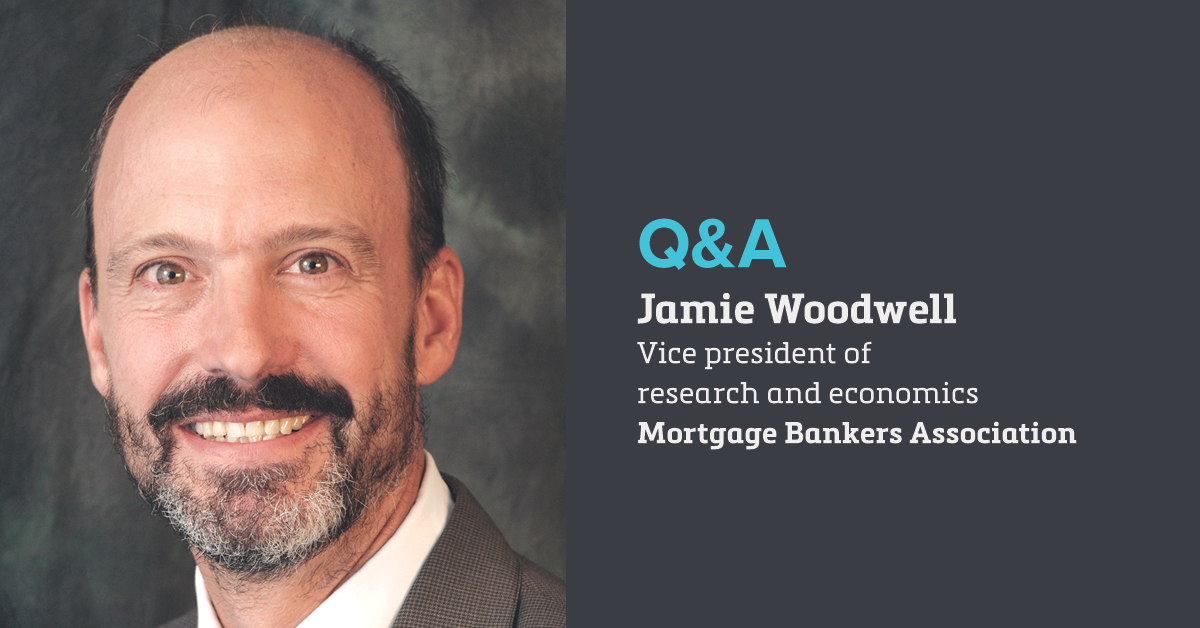Despite recent worries about interest rate hikes and inflation, commercial mortgage lending appears hotter than ever. In 2021, lending on all U.S. commercial real estate reached an estimated $900 billion, with multifamily housing accounting for a record $470 billion of this total.
This year, the Mortgage Bankers Association (MBA) forecast that commercial lending will surpass $1 trillion for the first time while multifamily lending will reach $493 billion. This past February, MBA’s Jamie Woodwell spoke with Scotsman Guide about the trends for commercial real estate and, in particular, for the multifamily housing sector in 2022 and beyond.
What is your economic forecast for the rest of 2022?
We are seeing that the strength of the economy is likely to continue through 2022. After seeing the gross domestic product of the U.S. grow by about 5.6% last year, we expect a bit of a slowdown this year to about 4%. However, that is still an economic expansion at a good, strong clip. We also expect inflation to remain above trend, but at a declining pace and end the year at about 3.5%. It will continue down in 2023, but we expect it to still be above the Fed’s preferred rate of about 2%.
Whether you are talking about sales transactions, mortgage originations or mortgage debt, multifamily properties have become a larger and larger share of commercial real estate.
You also expect new record highs for commercial real estate lending in 2022, correct?
That’s right. Our preliminary estimate for 2021 was that there was about $900 billion in total commercial lending. That estimate was up about 50% above 2020 levels. Now, part of that was a bounce back from the worst of the pandemic. But part of it was also a market response to strong fundamentals, increasing property values, low interest rates and a very favorable market. That should continue this year and we expect more than $1 trillion in lending for 2022.
How much of the total will be tied to multifamily housing?
Multifamily housing has been a growing share of commercial real estate for more than a decade now. The strong value increases we’ve seen have meant that whether you are talking sales transactions, mortgage originations or mortgage debt, multifamily properties have become a larger and larger share of commercial real estate. This year, we estimate multifamily lending alone will rise to $493 billion. That will be a new record.
How do you expect higher interest rates to impact your estimates?
We are expecting rate increases from the Federal Reserve this year. The exact number of increases remains an issue of great interest right now. We currently expect at least three interest rate hikes. But of equal importance to us, in addition to increases to the federal interest rate, is the adjusting of the Fed’s balance sheet and the ending of qualitative easing, which will have an impact on the yield curve. We are expecting longer-term interest rates for the 10-year Treasury to grind higher this year and next. We expect Treasurys to end 2022 at around 2.3%. Next year, it may be about 2.5%.
Why do your forecasts for 2023 show only modestly lower multifamily lending to about $474 billion?
Our expectations are that even with the increased rates, the capitalization rates can absorb most, if not all, of the increases in the base rates this year. Next year, we may start to feel some pressures as a result of the interest rate rises. Still, with the expected continued growth in property incomes, we think that the property values will still increase.
Your forecast is quite positive. What are you seeing that could derail your outlook for 2022?
We have what we call a ’bingo card’ of hot topics that can affect the forecast. The factors at play range from inflation and the Federal Reserve to global politics, such as problems with Ukraine, and changes in the way the pandemic is impacting the economy. There are still a lot of different issues that investors, lenders and others need to consider when making their plans about commercial real estate. ●

